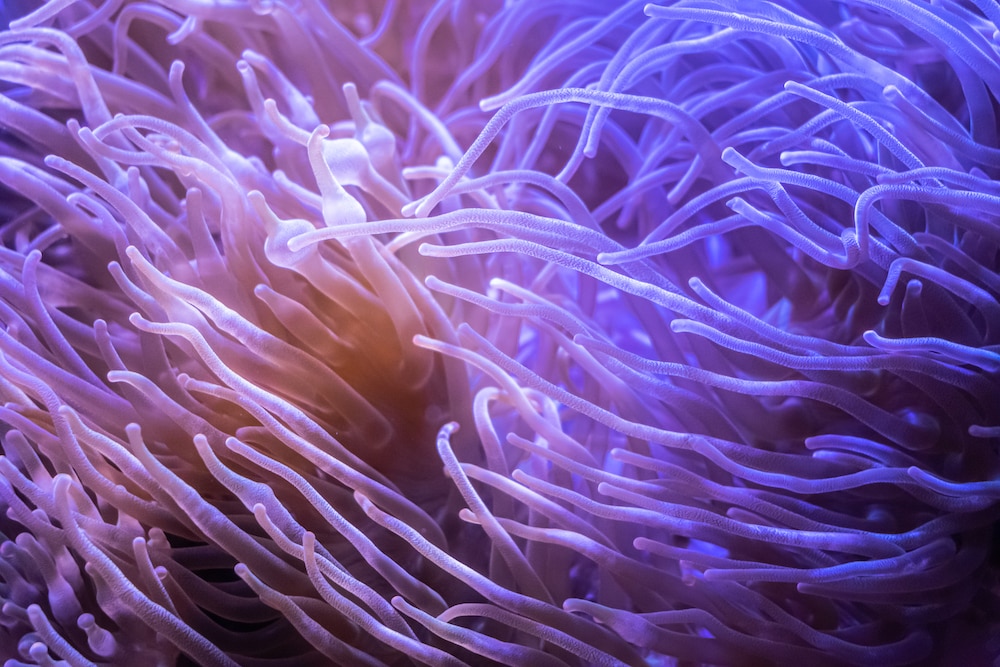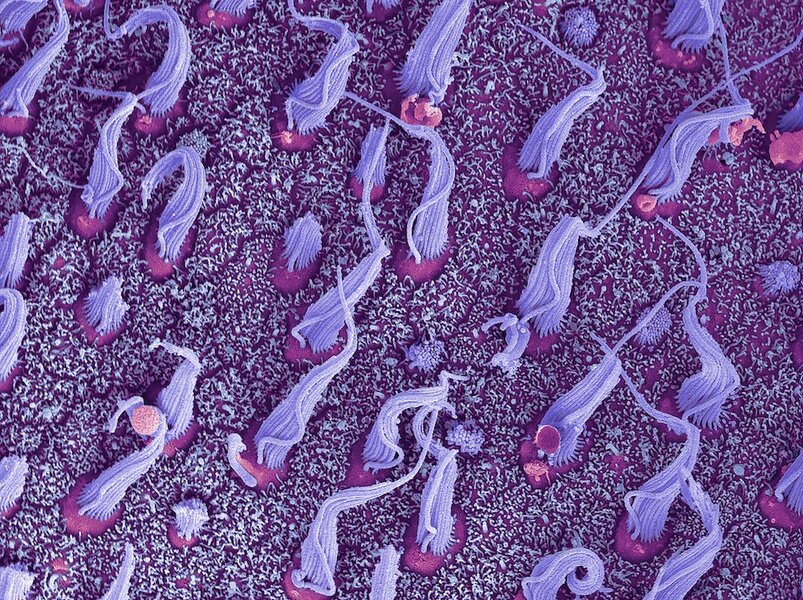Create a free profile to get unlimited access to exclusive videos, sweepstakes, and more!
Freaky sea anemone tentacles can feel because of the same gene that helps us hear
Humans have some bizarre evolutionary relatives.

However hard it is to believe, humans actually have something in common with a Lovecraftian creature that has no eyes or brain and looks like a mass of writhing tentacles.
So how are these life-forms even related to us? Humans, like every other animal that is symmetrical on both sides, are bilatarians, and the closest extant relatives of bilatarians are cnidarians like hydras, jellyfish, and yes, sea anemones. Now a gene behind the sense of touch in sea anemone tentacles has been found to be the same one that develops the cells in the human inner ear. Without this gene, POU-IV (pronounced “pow-four”), neither humans nor anemones would have hair cells — not that kind of hair — necessary for touch and hearing.
Cnidarians are (mostly) gelatinous marine invertebrates, though some, like corals, build their own exoskeletons. They have almost no recognizable organs close to ours. An internal cavity used for breathing vaguely functions like a lung, and while the cnidarian gastrointestinal cavity is something of a bizarre stomach with a mouth, it has no anus. Unlike bilatarians, cnidarians show radial symmetry. They are symmetrical all around. However many times they are visually divided from the middle, each part will be an exact reflection of the one across from it.
Researchers have now found out how the POU-IV gene links bilatarians to cnidarians. The international team recently published a study in eLife Sciences, led by Nagayasu Nakanishi and coauthored by Ethan Ozment, both of the University of Arkansas, on what that means for evolution. There must have been a creature that used the gene before its descendants diverged into the groups we now know as cnidarians and bilatarians. Nobody knew what anemone hair cells (below) did until now. We apparently have an ancient common ancestor.
"Many developmental genes serve as regulators that control the activity of other genes, including POU-iv, the gene we examined," Ozment told SYFY WIRE. "It appears that many of these regulatory patterns were present in the last common ancestor of cnidarians and bilaterians, and are still present in that ancestor's living descendants."
The gene that relates humans to anemones and other things that sound like they could hang out with Cthulhu is one of the proteins known as POU domain transcription factors. As an embryo forms, these are responsible for regulating many processes in its development, especially in what will eventually become the brain and nervous system. Hair cells in the inner ear only look like hairs. They are actually auditory cells that act as transducers, turning pressure waves into mechanical vibrations which then zap electrical signals to the brain, telling it they were pressured by something. That is how your brain lets you know you heard a sound.
Anemones and other cnidarians have hair cells right on their tentacles that allow them to sense any movements in the water that could mean prey is around. Both our sense of hearing and a tentacle’s sense of touch rely on pressure applied to hair cells, and without them, we would be unable to hear and they would not be able to feel. When the researchers knocked POU-IV out of mice, the mice lost their hearing. Factoring out the gene in cnidarians caused tentacular hair cells to grow abnormally and take away an anemone’s sense of touch. While it is unknown whether the hair cells in vertebrates and things like sea anemones are the same, or how exactly mechanosensory cells develop in anemones, Ozment is sure the hair cells do have the same kind of function.
"They both require pou-iv in order to develop properly," he said. "Both types of cells detect motion in the environment, suggesting that POU-IV was used in the development of motion-sensitive cells in the last common ancestor of cnidarians and bilaterians."
As if that isn’t freaky enough, there is another thing that POU-IV does in both humans and sea anemones, which only adds to the evidence for a common ancestor. It switches on the PKD1 gene. This gene encodes a necessary protein called polycystin-1. POU-IV regulates polycystin-1, and while not everything this protein does is fully understood yet, it is known that vertebrate kidney cells need it to sense the flow of fluid. It also has a role in the growth, division, and movement of kidney cells. Learning more about this protein could finally reveal how hair cells function in anemones.
By the way, sponges also have POU-IV, though what exactly it does in their bodies is still a mystery. You can only wonder what weird relatives our evolutionary family tree will reveal next.



























